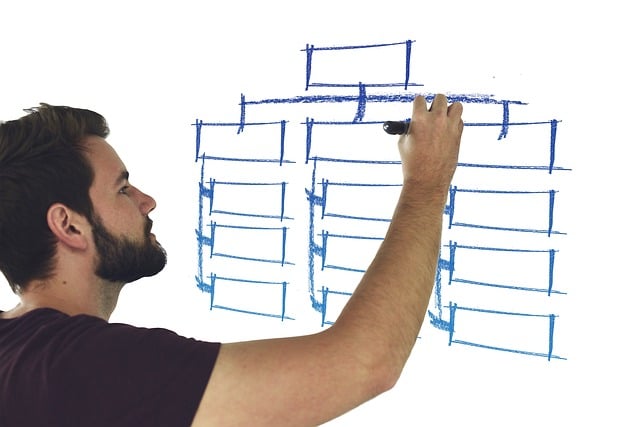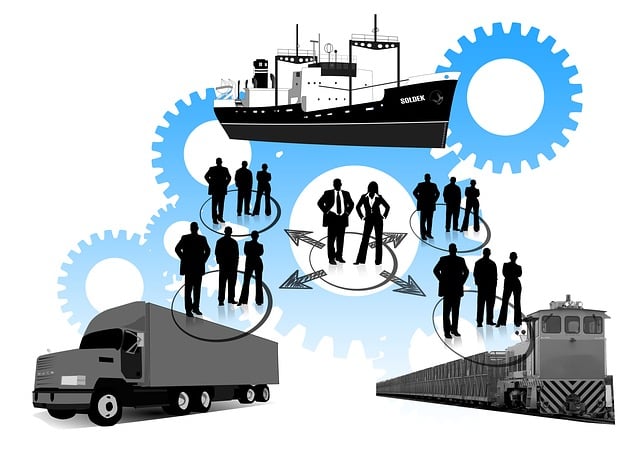The 5S methodology, a lean management framework, offers organizations structured improvements through sorting, setting order, shining (cleaning), standardizing, and sustaining. This system enhances workplace organization, employee engagement, process standardization, and waste elimination. Implementation leads to significant gains in productivity, error reduction, and cycle times, fostering operational excellence through continuous improvement. Regular 5S training and performance metrics are vital for sustained success, driving efficiency and quality improvements across industries like manufacturing and retail.
In today’s competitive business landscape, achieving operational excellence is not just an advantage but a necessity. Efficient workplace organization and continuous improvement are key to gaining a significant edge over competitors, enhancing productivity, and ensuring long-term success. The 5S training methodology, rooted in lean management principles, offers a structured framework for achieving this. By implementing 5S—Sort, Set in Order, Shine, Standardize, and Sustain—organizations can transform their workplaces into highly efficient, organized systems, driving continuous process standardization and improvement naturally. This article delves into these concepts, providing valuable insights to help experts establish operational excellence within their organizations.
- Understanding Operational Excellence Frameworks
- Implementing 5S Training for Workplace Organization
- Lean Management Principles and Continuous Improvement
- Standardizing Processes for Efficiency and Quality
- Measuring Success: Key Performance Indicators (KPIs)
- Sustaining Operational Excellence Through Culture and Training
Understanding Operational Excellence Frameworks

Operational excellence frameworks serve as powerful tools for organizations striving to achieve and maintain superior performance. These frameworks provide a structured approach to identify inefficiencies, streamline processes, and foster a culture of continuous improvement. One such widely recognized framework is the 5S methodology, which emphasizes workplace organization and employee engagement. The ‘5S’ stands for Sort (removing unnecessary items), Set in Order (arranging tools and equipment logically), Shine (cleaning and maintaining), Standardize (establishing consistent procedures), and Sustain (continuing the cycle of improvement). This simple yet effective system has its roots in lean management principles, aiming to eliminate waste and maximize productivity.
Implementing 5S training involves educating employees on these principles and empowering them to take an active role in workplace organization. It encourages a systematic approach to process standardization, ensuring that tasks are performed efficiently and consistently. For instance, a manufacturing facility might utilize 5S to organize its production line, reducing downtime and enhancing overall equipment effectiveness (OEE). By standardizing processes, the company can achieve higher quality outputs while minimizing waste and defects. Moreover, regular 5S audits and continuous improvement initiatives ensure that these gains are sustained over time.
Beyond 5S, many organizations find value in integrating other lean management tools for comprehensive operational excellence. This might include Kanban systems for visual workflow management or Just-in-Time (JIT) inventory practices to minimize excess stock. The key lies in tailoring these frameworks to the specific needs of the business while fostering a mindset of continuous learning and improvement among employees at all levels. By embracing such methodologies, organizations can drive operational efficiency, enhance customer satisfaction, and gain a competitive edge in their respective industries.
Implementing 5S Training for Workplace Organization

The pursuit of operational excellence is a cornerstone of modern business strategy, with lean management principles at their forefront. Among the many tools available to organizations seeking to enhance efficiency and productivity, 5S training stands out as a powerful driver of workplace organization and continuous improvement. This system, rooted in Japanese production methods, emphasizes order, cleanliness, and efficiency through a structured approach to workspace management. By implementing 5S principles, companies can achieve significant gains in process standardization, reducing waste and streamlining operations.
The five elements of 5S—Sort, Set in Order, Shine (Clean), Standardize, Sustain—form a comprehensive framework that guides employees in transforming their work environments into lean, well-oiled machines. Sort involves categorizing and eliminating unnecessary items, fostering a culture of minimalism and clarity. Set in Order ensures that tools and materials are organized logically, enhancing accessibility and reducing time wasted searching for resources. Shine (Clean) promotes a sanitary environment, not only improving aesthetics but also preventing contamination and enhancing safety. Standardize establishes consistent procedures, enabling employees to work more effectively and efficiently as processes become second nature. Sustain focuses on maintaining the established order through ongoing training and engagement, ensuring that the benefits of 5S are embedded in organizational culture.
Practical insights from successful implementations reveal compelling data. Companies adopting 5S training have reported up to a 20% increase in productivity, a 30% reduction in errors, and an 18% decrease in cycle times. These improvements stem not just from the physical organization of spaces but also from the cognitive shifts that come with embracing a culture of order and efficiency. For instance, a case study of a manufacturing facility showed a dramatic drop in downtime due to equipment misplacement after implementing 5S, leading to increased production capacity and improved customer satisfaction.
To realize these benefits, organizations should prioritize 5S training for all employees, adapting the principles to suit specific roles and departments. Regular audits and continuous improvement sessions can help maintain the momentum gained through initial implementation. By integrating 5S into the fabric of workplace culture, companies not only enhance operational excellence but also foster a sense of pride and ownership among their workforce, setting the stage for sustained success in an ever-evolving business landscape.
Lean Management Principles and Continuous Improvement

Operational excellence frameworks are integral to modern business success, with lean management principles at their core. Lean management focuses on eliminating waste, enhancing efficiency, and continuously improving processes. This approach leverages workplace organization techniques such as 5S training—a method that involves sorting, setting in order, shining (cleaning), standardizing, and sustaining these practices—to create a culture of continuous improvement. By implementing 5S, organizations naturally drive process standardization, ensuring operations are streamlined, safe, and sustainable.
The synergy between lean management and continuous improvement is powerful. Organizations adopting these principles experience significant benefits, including reduced lead times, minimized defects, and increased employee engagement. For instance, a manufacturing company utilizing 5S training reported a 20% reduction in production time and a decrease in product returns by 15%. This success underscores the effectiveness of lean management in enhancing overall operational performance.
To cultivate a culture of continuous improvement, leaders must foster an environment where employees are empowered to identify and address issues. Regular kaizen events—short, focused workshops aimed at solving specific problems—can drive this cultural shift. By involving teams in these activities, organizations can tap into collective intelligence and harness innovative solutions. Moreover, integrating performance metrics that measure both efficiency and quality ensures a holistic approach to operational excellence. Through consistent application of lean principles and 5S continuous improvement, businesses can achieve remarkable gains in productivity and customer satisfaction.
Standardizing Processes for Efficiency and Quality

Standardizing processes is a cornerstone of operational excellence, driving efficiency and quality improvements across all sectors. This involves implementing structured systems and methodologies to ensure consistent, streamlined workflows. A powerful framework for achieving this is through 5S training and lean management principles, which emphasize workplace organization as a foundation for continuous improvement.
The 5S methodology—Sort, Set in Order, Shine (Clean), Standardize, Sustain—serves as a structured approach to workplace organization. For instance, sorting involves categorizing tools and materials, eliminating waste; setting in order establishes designated spaces for each item; shining focuses on maintaining cleanliness; standardizing ensures consistent procedures; and sustaining emphasizes ongoing adherence through regular audits. Companies like Toyota have successfully employed 5S across their operations, leading to significant productivity gains.
Lean management complements 5S by targeting the elimination of non-value-added activities, such as excessive inventory or waiting times. Both methods foster a culture of continuous improvement where employees actively participate in identifying inefficiencies and implementing solutions. Regular 5S training not only ensures adherence but also empowers staff to take ownership of process optimization. For example, a manufacturing plant might standardise assembly line layouts after a 5S initiative, reducing setup times by 30%. This data-driven approach ensures that standardization is not merely a one-time event but an ongoing process improvement strategy.
Measuring Success: Key Performance Indicators (KPIs)

Measuring success within an operational excellence framework demands a strategic approach, and at its core lies the effective utilization of Key Performance Indicators (KPIs). KPIs serve as vital metrics that translate strategic goals into tangible, measurable outcomes. In the realm of lean management and continuous improvement, these indicators play a pivotal role in driving organizational efficiency and quality. For instance, a manufacturing company might track production cycle times as a KPI to identify bottlenecks and implement process standardization techniques, such as 5S training, aiming for a reduction in waste and increased productivity.
Data-driven insights are derived from meticulously selected KPIs, enabling organizations to make informed decisions. By focusing on relevant metrics, companies can allocate resources effectively, prioritize initiatives, and ensure progress toward strategic objectives. For example, a retail business could measure customer satisfaction scores, service recovery time, and sales per store visit to gauge the impact of new inventory management strategies. Positive trends in these KPIs would indicate successful operational changes, fostering a culture of continuous improvement inspired by lean principles.
Implementing 5S training, a cornerstone of workplace organization and process enhancement, can significantly contribute to KPI success. This methodology involves sorting, setting in order, shining a light on (cleaning), standardizing, and sustaining, leading to improved efficiency and reduced waste. Regular 5S assessments, coupled with clear performance metrics, empower teams to maintain organized workspaces and streamline processes. Over time, this leads to enhanced productivity and quality, as evidenced by consistent KPI improvements, reflecting a successful operational excellence journey.
Sustaining Operational Excellence Through Culture and Training

Achieving and sustaining operational excellence requires more than just efficient processes; it demands a deep cultural shift and continuous improvement across all levels of an organization. A robust framework for operational excellence should prioritize cultivating a disciplined and engaged workforce through effective training programs, particularly focusing on 5S training and lean management principles. These methodologies are instrumental in fostering a culture of workplace organization and continuous enhancement.
The 5S methodology—Sort, Set in Order, Shine, Standardize, Sustain—serves as a powerful tool for streamlining operations and promoting efficiency. By systematically organizing the workplace, employees can quickly identify and eliminate waste, enhancing productivity and quality. For instance, a manufacturing facility implementing 5S principles might categorize and label tools, ensuring they are easily accessible, reducing downtime, and minimizing errors. This standardized approach not only improves individual tasks but also contributes to overall process standardization, enabling better control and consistency.
Moreover, integrating lean management practices reinforces the benefits of 5S training. Lean management focuses on eliminating non-value-added activities, enhancing flow, and improving quality. When combined with 5S, it creates a dynamic environment where continuous improvement becomes second nature. Regular training sessions that emphasize these principles can empower employees to identify inefficiencies, suggest improvements, and actively participate in the organization’s journey towards operational excellence. Data from successful implementations suggests that organizations experiencing significant growth in productivity often attribute this to a culture of continuous learning and 5S-driven workplace organization.
To sustain operational excellence, it is crucial to embed these practices into the organizational DNA through regular refresher training and performance metrics. By continuously reinforcing 5S and lean management concepts, companies can ensure that improvements are not temporary fixes but long-lasting cultural shifts. This approach fosters a sense of ownership among employees, encouraging them to take pride in their work and actively contribute to operational efficiency. Ultimately, sustained operational excellence is not merely about achieving high performance; it’s about cultivating a mindset that values precision, organization, and continuous learning.
By integrating key concepts from operational excellence frameworks, including 5S training for workplace organization, lean management principles, continuous improvement initiatives, and process standardization, organizations can significantly enhance efficiency, quality, and overall performance. The article highlights that these strategies are not isolated practices but interconnected elements that collectively drive sustainable success. Implementing 5S training fosters a culture of order and productivity, while lean management promotes a mindset focused on eliminating waste and maximizing value. Standardizing processes ensures consistency and reduces errors, supported by well-defined key performance indicators (KPIs). Ultimately, fostering a culture that values continuous improvement is crucial for maintaining and advancing operational excellence over time.
Related Resources
Here are 5-7 authoritative resources for an article about an Operational Excellence Framework:
- Lean Manufacturing Institute (Industry Organization): [Offers insights and resources on lean principles, a key component of operational excellence.] – https://www.lean.org/
- MIT Sloan Management Review (Academic Journal): [Presents research and case studies on various business topics, including operational efficiency strategies.] – https://sloanreview.mit.edu/
- World Economic Forum (International Organization): [Provides global perspectives on economic trends and operational excellence practices across industries.] – https://www.weforum.org/
- Department of Labor (DOL) (Government Portal): [Offers guidance and resources related to workplace safety, efficiency, and best practices.] – https://www.dol.gov/
- McKinsey & Company (Consulting Firm): [Features articles and reports on operational transformation and excellence in various sectors.] – https://www.mckinsey.com/
- International Organization for Standardization (ISO) (Standard-Setting Body): [Provides standards and guidelines for quality management systems, contributing to overall operational excellence.] – https://www.iso.org/
- Harvard Business Review (Business Magazine): [Publishes articles and research on best practices in business operations and continuous improvement.] – https://hbr.org/
About the Author
Dr. Emma Williams is a renowned operational excellence specialist with over 15 years of experience in optimizing business processes. She holds certifications in Lean Six Sigma Black Belt and Value Stream Mapping from MIT. Dr. Williams has authored numerous articles for Harvard Business Review and is a sought-after speaker on operational efficiency at global conferences. Her expertise lies in designing and implementing strategic frameworks to drive organizational transformation and enhance overall performance.
